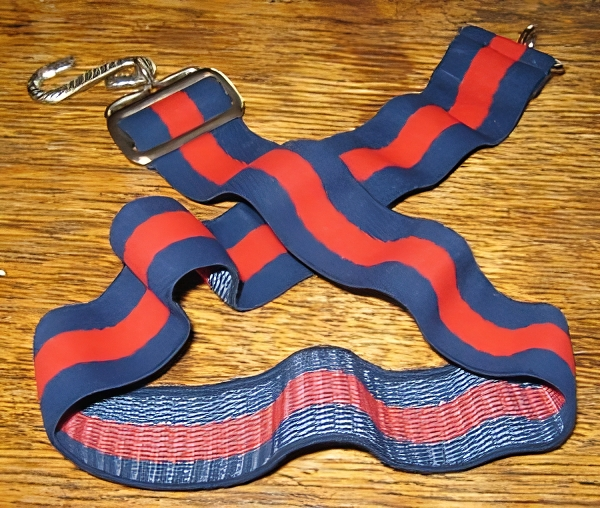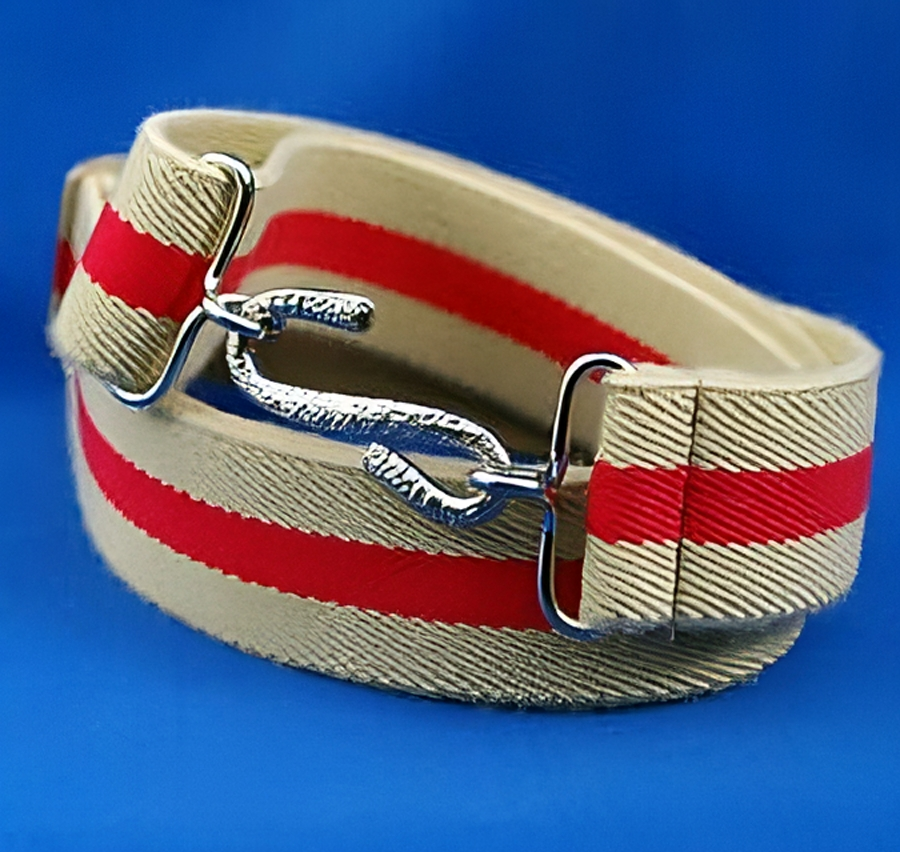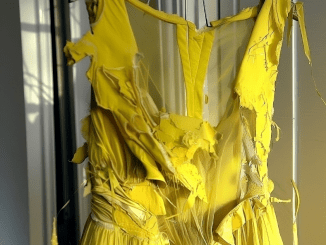The snake belt, once a staple of English and British school uniforms, has a unique place in fashion history. Known for its distinctive S-shaped metal buckle designed to resemble a snake, this belt was more than just an accessory—it was a symbol of childhood for many boys across England. Over time, the snake belt has faded from popular use, but its legacy remains.
What is a Snake Belt? Understanding Its Design and Function
The snake belt was primarily made of elastic material, making it flexible and adjustable for wearers of various sizes. Its defining feature was its metal snake-shaped buckle, which gave the belt its iconic name. This belt was not only fashionable but also practical, designed to be easily adjustable with a metal slide and loop that allowed for a snug fit.
How It Worked
- Elastic Strip: The snake belt’s elasticated design allowed it to expand and contract with the wearer’s movements, providing comfort and flexibility.
- Metal Buckle: The S-shaped buckle fastened the belt at the front, making it simple for boys to wear and adjust.
- Safety Features: Unlike traditional belts with long ends that could dangle dangerously, the snake belt’s design minimized loose ends, making it safer during rough play or sports activities.
Its simplicity and functionality made the snake belt a popular choice, especially for school uniforms and sportswear.
The Origin of the Snake Belt: Tracing Its Roots
The exact origins of the snake belt are somewhat unclear, but it is believed to have emerged in the mid-19th century. Early photographic evidence shows its use as early as the 1860s, often worn with tunic suits by young boys.
From Sportswear to School Uniforms
Most elements of traditional British school uniforms were borrowed from sportswear, and the snake belt was no exception. The belt gained popularity as a practical alternative to braces, which were commonly worn at the time. Notably, famous English cricketer W.G. Grace endorsed belts over braces in 1888, claiming that belts allowed for greater freedom of movement. By the early 20th century, the snake belt had become a favored accessory for cricket and lawn tennis players.
- Colorful Stripes: Early snake belts were often made of silk and featured colorful stripes, allowing schools and sports clubs to customize them according to team or school colors.
- Adoption by Schools: The snake belt’s transition from sportswear to school uniform was seamless. Schools adopted it as part of their official uniforms, with many offering versions in school colors.
The Popularity of Snake Belts in British Schools
From the 1930s to the 1960s, the snake belt became a common feature in English schools. It was not always a mandatory part of the uniform, but it was a popular choice among boys.
Variety of Colors
The snake belt’s availability in different colors made it a versatile accessory that could match school blazers, ties, caps, and badges. For example:
- Primary Schools: At Hart Hill Primary School in Luton, the snake belt featured two brown stripes and a central yellow stripe, reflecting the school colors.
- Grammar Schools: Luton Grammar School’s snake belt had two red stripes and a central yellow stripe, while other schools opted for combinations like maroon and grey, green and yellow, or black and white.
These colorful belts were not only worn at school but also outside of school, sometimes in support of local sports teams.
Changes in Design: The Evolution of the Snake Belt

As with most fashion items, the snake belt underwent several design changes over the years. Originally wide and made of heavier materials, the belt was later refined for comfort and practicality.
Improvements in the 1930s
- Width Reduction: In the 1930s, the width of the belt was reduced from 1.75 inches to 1.25 inches, making it more suitable for younger boys.
- Introduction of Synthetic Fibers: The use of artificial fibers improved the belt’s elasticity and durability. This made the belt more comfortable to wear and increased its lifespan.
- Neater Appearance: The new design offered a neater fit, which made it more appealing for everyday wear.
Despite its improvements, the basic concept of the snake belt remained the same—a flexible, adjustable belt with a distinctive snake-shaped buckle.
Comfort and Practicality: Why Boys Loved the Snake Belt
The snake belt was not only functional but also comfortable. Its elasticated design allowed it to stretch with the wearer’s movements, making it an ideal choice for active boys. Whether playing sports or engaging in playground antics, the snake belt provided the flexibility needed for rough-and-tumble activities.
- Adjustability: The belt’s adjustability meant it could be worn for years, even as the wearer grew. The metal slide ensured a secure fit, preventing the belt from loosening during play.
- Popular Appeal: Boys often found the bright colors and playful design of the snake belt appealing, making it a sought-after accessory in the post-war years.
The Decline of the Snake Belt: From Mainstream to Obscurity
By the 1970s, the snake belt had started to fall out of favor. Changing fashion trends, the rise of jeans with built-in waistbands, and the growing popularity of leather belts contributed to its decline.

Braces vs. Snake Belts
There was always a debate between the use of braces and snake belts in school uniforms. While some schools encouraged the use of snake belts, others preferred braces. Notable author John Mortimer humorously recounted his preparatory school’s indecision over the issue, highlighting the frequent vacillation between the two accessories.
- Changes in School Uniforms: As school uniforms evolved to include more modern designs, the need for snake belts diminished. Additionally, the introduction of elasticated waistbands in trousers further reduced the demand for separate belts.
- Limited Availability: By the 1980s, snake belts were mostly available in specialized stores or as novelty items, often sold as souvenirs or part of retro-themed clothing lines.
The Snake Belt Today: A Nostalgic Relic
While snake belts are no longer a common sight, they still hold a nostalgic place in British fashion history. Occasionally, modern versions can be found, often as thin, decorative belts for younger boys. These belts, however, are typically more for fashion than function.
Modern Revival Attempts
In recent years, there have been attempts to revive vintage styles, including the snake belt. Some brands have reintroduced the classic elasticated belt, often marketed as retro accessories for children or as part of themed school uniforms.
Conclusion: Remembering the Snake Belt’s Legacy
The snake belt may have faded from mainstream use, but its legacy remains a part of British cultural history. It represents a bygone era of school uniforms, childhood play, and simple yet functional design. For those who grew up wearing it, the snake belt is more than just an accessory—it’s a symbol of nostalgia, reminding them of school days, playgrounds, and the carefree spirit of youth.


